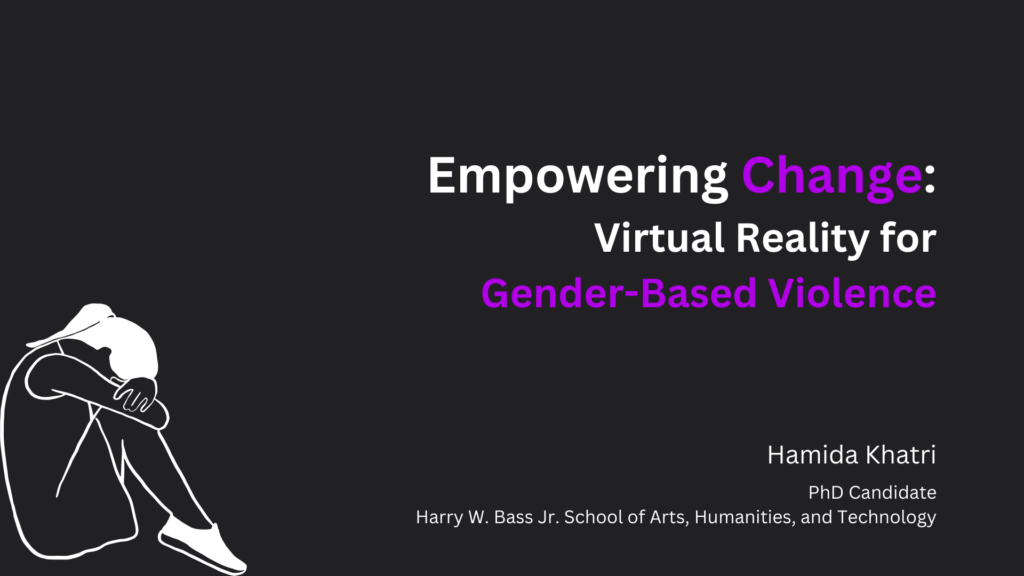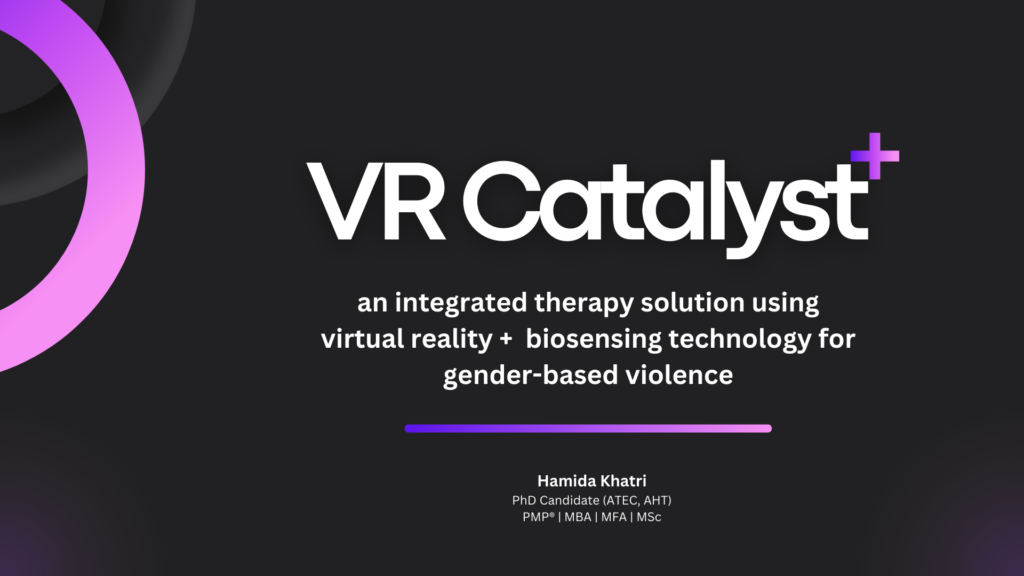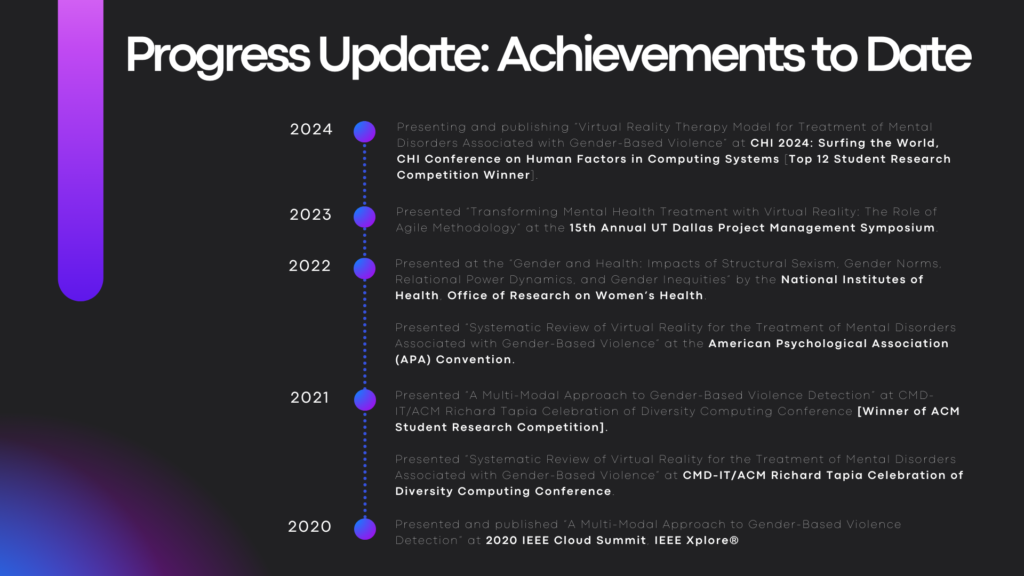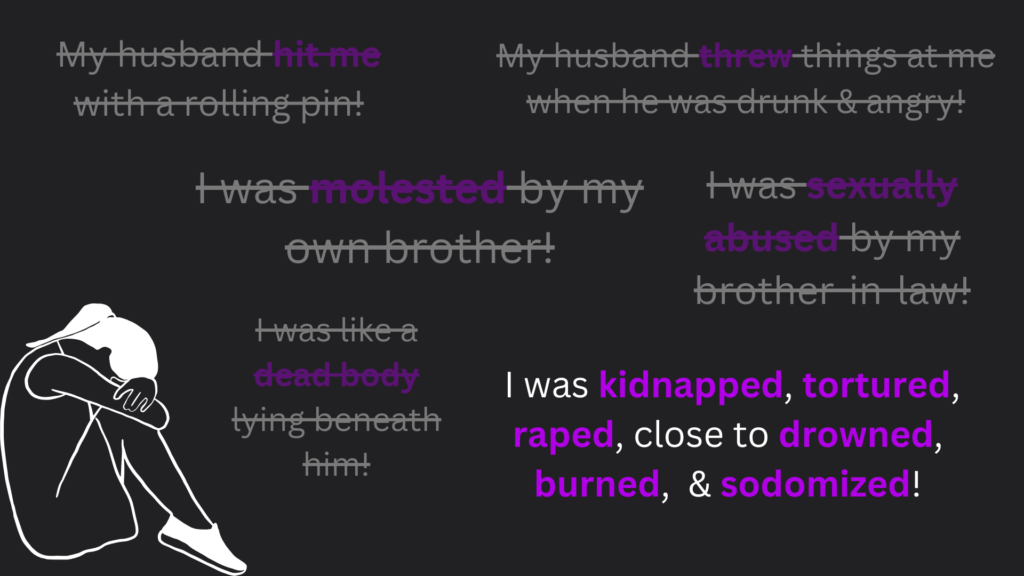
I recently had the privilege of presenting my doctoral project, VR Catalyst, at the HASTAC Digital Fridays of Spring 2024 on March 22nd under the theme, “Digital Horizons: Navigating Stories, Realities, and Visions.” My presentation, titled “Empowering Change: Virtual Reality for Gender-Based Violence,” marked a significant milestone in my academic and professional journey. I am thrilled to share insights and reflections on this momentous occasion.
The turnout at the event was beyond my expectations, and the engagement from the audience fueled my passion for the subject even more. Presenting VR Catalyst was not just an academic obligation; it was a deeply personal and gratifying experience. Through this project, I aim to tackle the pervasive issue of gender-based violence (GBV) by harnessing the potential of virtual reality (VR) combined with biosensing technology. The enthusiasm and support I received at the event have only reinforced my commitment to this cause.

My journey into exploring the intersections of VR technology and GBV response began with a disturbing realization of the widespread nature of these incidents throughout my career as a social justice advocate and community artist in the last 12 years.

Personal narratives of abuse from the participants of my workshops and collaborations laid the groundwork for my project. These stories, ranging from domestic violence to severe sexual assault, highlight the urgent need for innovative solutions in therapy and support for survivors.

At the heart of VR Catalyst is the combination of VR and biosensing technology, aimed at providing an integrated therapy solution for individuals affected by GBV. The project draws on the Hero Therapy Model and Post-Traumatic Growth Theory, focusing on creating personalized, immersive experiences that empower survivors to author their healing journeys.
Four pillars underpin the VR Catalyst model: mental health, virtual reality, biosensing technology, and storytelling. This multidisciplinary approach ensures a holistic therapy experience, offering personalized biofeedback data to track the healing progress. For the presentation, I shared a prototype VR simulation that encapsulated a survivor’s experiences, reflecting their mental and physical tribulations and resilience.

The creation of the VR environment is a tale of creativity infused by technology. By using advanced tools like the RivoPoint POP 2 3D Scanner, Unreal Engine, Blender, ZBrush, Marvelous Designer, iClone 8, MetaHuman, and Meta Quest Developer Hub on MetaQuest Pro, I have been able to bring to life the survivor’s journey from being a victim of GBV to a hero of their own story. The meticulous development process, involving character design, animation, and environment creation, aims to produce a deeply immersive and therapeutic VR experience. This effort is complemented by authentic cultural touches in the avatar’s attire, enhancing the relatability and impact of the narrative.

The reception for my project was incredibly encouraging, a testament to the potential impact of innovative technologies in addressing complex social issues like GBV. As I continue to refine and expand the project, my goal remains clear: to empower survivors, facilitate their healing journeys, and contribute to the broader fight against GBV.
For those interested in learning more about VR Catalyst and my work, I invite you to visit my personal website and the project’s dedicated site shared below. Your support and engagement are invaluable as we work together towards a world free of GBV.
Thank you to everyone who joined me at HASTAC Digital Fridays of Spring 2024 on March 22nd. Your support fuels my passion and dedication to this cause.
Connect + Collaborate
- Personal Website: https://www.hamidakhatri.com/
- VR Catalyst: https://www.vrcatalyst.org/